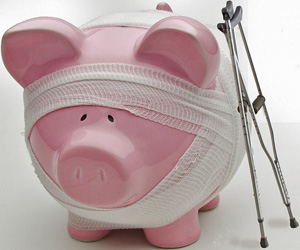 Financial difficulties that lead to filing for bankruptcy are always disheartening. The feeling of financial ruin and the concerns about the next step in managing personal finances will occur.
Financial difficulties that lead to filing for bankruptcy are always disheartening. The feeling of financial ruin and the concerns about the next step in managing personal finances will occur.
While it might seem like bankruptcy is the end of good personal finances, it is actually a second chance that allows a clean slate to get the situation under control.
Here are some powerful steps that can help you recover financially as quickly as possible after your bankruptcy has been finalized:
Determine the Cause of Bankruptcy
Going bankrupt usually has a specific cause and it is vital to identify the reason to avoid financial difficulties in the future. Common reasons that might cause the situation include over-spending on credit cards, impossible budget planning, costly emergencies or forgetting to pay the bills on time.
Individual reasons for the situation are variable, but understanding the cause of the problem makes it easier to avoid the situation in the future. Regardless of the specific reason, building up an emergency savings account and making a budget that avoids over-spending will help the situation. Budgeting needs to have realistic figures based on current spending habits.
Set Financial Goals
Financial goals help get all of the information about current spending, past problems and the future plan in one place. Financial goals might include putting a certain amount of money aside for saving each month, rebuilding personal credit or getting over-spending under control. In most cases, the best goals should address the problems that led to going bankrupt.
Obtain New Credit
A new credit card is not always easy to obtain in the best situations, but some lenders are willing to work with poor credit and a bankruptcy. The key is finding a lender who will issue the new credit. In some cases, it is necessary to start out with a secured card and then work up to getting a regular card as the credit improves.
Buy small items on the card and then pay the full amount each month. This will help rebuild the credit rating and show financial responsibility despite the past challenges. Rebuilding credit and moving forward requires a credit card to build up the score ratings.
Pay Bills on Time
Paying the bills on time is a key part of rebuilding the credit and getting financial budgeting under control. Those who are forgetful about the timing of bill payments should consider automatic bill pay solutions. Depending on the company, it might be possible to have the bill automatically charged to an account each month.
The only responsibility of the individual is putting enough money in the account to pay the full cost of the bills. Some companies might not have automatic repayment features, but setting up as many as possible will reduce the number of dates consumers must remember for normal bill payments.
Going bankrupt is never an easy decision, but it does not mean the situation is impossible to get back under personal control. Working out a new financial plan and setting up methods of ensuring consistent payments will ultimately improve the credit history. With proper planning, going bankrupt is only a bump in the road.
About the author: This post was provided on behalf of James R Yanch, a bankruptcy trustee offering services in debt consolidation, credit counseling and many more.
Photo credit: Ken Teegardin